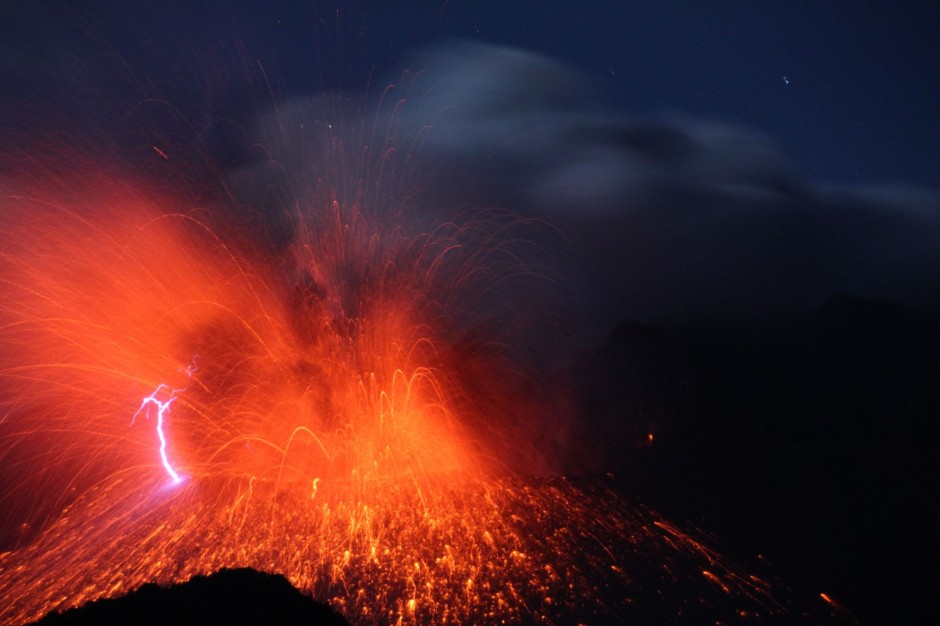Lightning bolts formed in dirty thunderclouds could help geologists to detect explosive volcanic eruptions. Volcanic lightning is very poorly understood, but Corrado Cimarelli, from the University of München, has been able to reproduce the phenomena in his laboratory.
Volcanic lightning is broadly similar to lightning in thunderclouds, but the addition of ash makes the process more complex. Volcanologists have dubbed ash-rich plumes ‘dirty thunderclouds’.
Electrostatic forces can alter the size of the ash particles. Smaller particles remain suspended in the high atmosphere for longer, allowing them to spread over larger distances, and are more likely to lead to respiratory problems.
Electrostatic charges are a common feature of plumes, but they are not always easy to observe. They can be seen more clearly at night. Cimarelli’s colleague, Bettina Sheu, has captured high-resolution videos of volcanic eruptions in action at Sakurajima in Japan.
With the right equipment, the changing electromagnetic field surrounding a plume could allow eruptions to be detected from afar.
In remote regions, such as the middle of the Andes, it can be difficult to know that an explosive eruption has happened at all. For those living in close proximity to the vent, there are more pressings hazards than ash fallout and lightning, and warnings of the eruption using electrostatic charges come too late.
But if the electrostatic field of an explosive plume can be detected remotely, it could be used to predict the size of the ash particles and map where the ash is likely to fall. Better understanding of how lightning is generated, its effects and how to detect it could help to mitigate this secondary volcanic hazard.
Creation of volcanic lightning requires two things: overpressure at the vent, and a stream of charged and separated particles. Normal processes during an eruption encourage ash particles to rub against each other and break, charging them up. The turbulent nature of the plume provides a mechanism for separating the polarized particles – a perfect storm for lightning generation.
Cimarelli’s experiments reproduce both of these essential conditions. In a promising step forward, his research group managed to produce a spark in their laboratory mimicking volcanic lightning. His spark, at around 5cm long, is a fraction of the size of true volcanic lightning, which strikes over hundreds of meters. But the lab spark allows him to study the processes that give rise to the necessary electrical conditions.
This work was presented at the EGU conference in Vienna. The experimental results have been published in Geology and are available open access.

